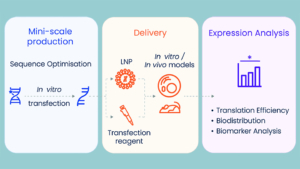
Breakthrough study reveals stability key for mRNA
A landmark discovery by a team of South Korean scientists could transform the way RNA-based vaccines and therapeutics are developed and produced. Researchers led jointly by Professor V. Narry Kim and Professor Jin-Hong Kim have identified a series of viral RNA motifs that make conventional messenger RNA (mRNA) far more stable and efficient, potentially revolutionising RNA drug manufacturing.
Viral RNA motifs, including A7, make linear mRNA as stable as circular RNA, boosting protein expression and enabling durable, manufacturable RNA drugs. This discovery could revolutionise the field of RNA drugs, which theoretically can target the entire human genome whereas today’s protein-based targets only represent 2% of the druggable space.
Published in Nature Biotechnology, the study details how the group screened more than 196,000 viral sequences to uncover 11 RNA motifs that protect mRNA from rapid degradation. These motifs recruit the host enzyme TENT4, which extends the poly(A) tail – a molecular safeguard that stabilises RNA and sustains protein production over time.
The A7 motif: linear mRNA achieves circular-like stability
Among the 11 newly identified motifs, one stood out: A7. This element made linear mRNA as stable as circular RNA (circRNA) while achieving even higher protein translation levels. In preclinical mouse-liver studies, A7-modified mRNA maintained robust protein expression for more than two weeks, outperforming comparable circular RNA constructs.
The discovery was the result of a close collaboration between Narry Kim’s laboratory at Seoul National University and Jin-Hong Kim’s team at the Institute for Basic Science (IBS) in Daejeon. The two groups combined expertise in RNA biochemistry, viral genomics, and biotechnological engineering to systematically identify RNA elements capable of boosting stability without compromising translation or manufacturability.
“By learning from nature’s own viral RNA design principles, we have found a way to make linear mRNA both stable and highly expressive,” said Professor Jin-Hong Kim, emphasising that the motifs are compatible with N1-methylpseudouridine, a key chemical modification used in current mRNA vaccines to enhance efficacy and reduce immunogenicity.
Overcoming a long-standing limitation in RNA medicine
The intrinsic instability of mRNA has long limited its use in vaccines and therapeutics. While alternative formats such as circular RNA or self-amplifying RNA offer greater persistence, they often suffer from reduced translation efficiency, modification incompatibility, and complex manufacturing.
The Korean team’s findings overcome these obstacles by providing a simple, modular solution: small RNA elements that naturally stabilise linear mRNA while keeping production processes straightforward and scalable.
A turning point for RNA therapeutics manufacturing
By incorporating these viral stability motifs—particularly A7—future RNA vaccines and therapeutics could achieve high, long-lasting protein expression, low immune activation, and cost-effective manufacturing. This positions South Korea as a global leader in RNA innovation and could accelerate the next generation of RNA-based drugs worldwide.
“This breakthrough opens a new chapter for RNA medicine,” commented Professor Narry Kim. “It allows us to combine the durability of circular RNA with the flexibility and simplicity of linear mRNA.”


 BioMed NV
BioMed NV Adobe Stock.com - Boontharika
Adobe Stock.com - Boontharika Tebubio SAS
Tebubio SAS